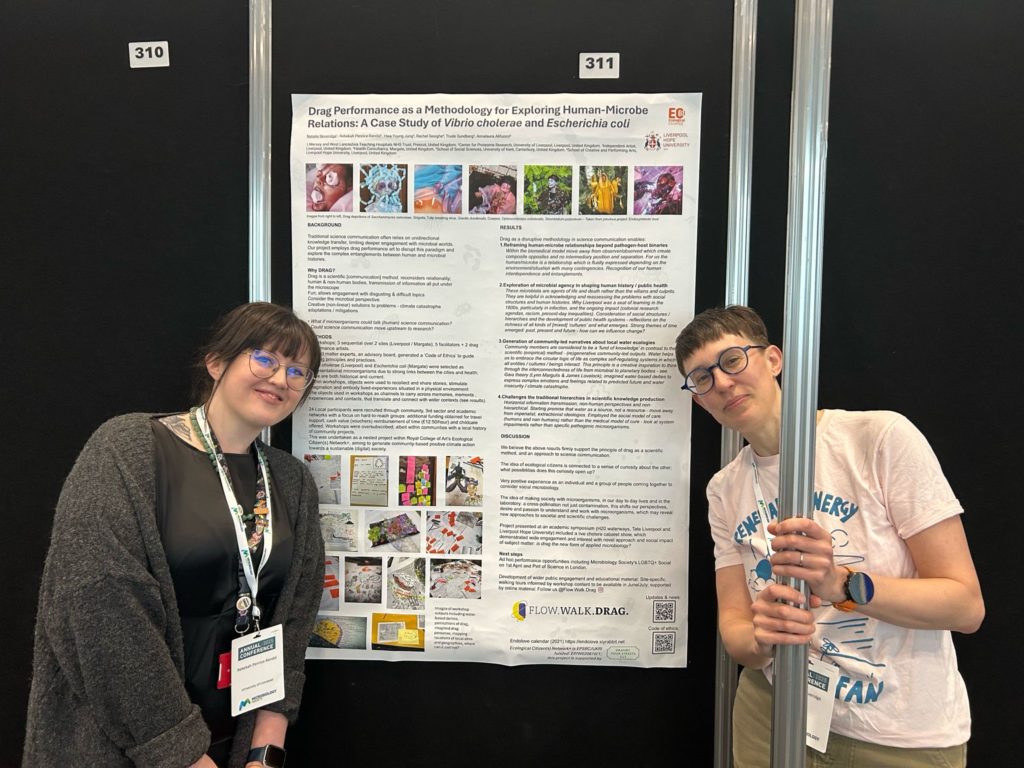The Flow.Walk.Drag. team has given careful thought to the principles and ethical approach of the project. As a participatory project, co-created with multiple collaborators, including workshop participants recruited in Margate and Liverpool, we are attentive to our responsibilities to our co-creators and the communities we work in.
Our project centres joy and play, using drag and creative participatory methods. Yet we are exploring difficult topics that have the potential to evoke distress among those we work with. FWD’s themes may evoke disgust, anger and other difficult emotions, and may generate conflict and backlash as we explore themes of contagion, pollution, exclusion, and our relationships with microorganisms. Working with people as collaborators and co-creators is always a complex process, as we navigate a range of needs, perspectives and expectations, and respond to issues that arise.
To do this work with care and integrity, we have established an ethics infrastructure for the project which includes a Code of Ethics and an Advisory Board. This infrastructure guides our work, setting out principles and processes that act as ethical coordinates, helping us to think through our approach to every element of the project and to respond to issues as they arise.
(more…)








